by Shelby Clark
When you go to work, how do you feel? Consider the following questions:
At work, do you feel bursting with energy?
At work, do you feel full of meaning and purpose?
Does time fly when you are working?
Are you enthusiastic about your job?
Does your job inspire you?
When you get up in the morning, do you want to go to work?
If you answered yes to many of these questions, it’s likely that you feel very engaged by your work. Engagement can refer to how committed individuals feel towards their “work, team, and organization.” How happy and satisfied someone is at work is also often an element of worker engagement, perhaps why engagement and well-being efforts often go hand-in-hand. Commitment, happiness, satisfaction – these ideas of engagement are common. For example, students might be described as engaged in their school work if they show dedication and “stick-to-itiveness” or if they are consistently excited to show up to school each day.
Here at The Good Project, the idea of engagement, in addition to ethics and excellence, serves as one of our 3 Es of “good work.” However, when The Good Project research originally began in the 1990s, this concept was not a part of the original “Es.” As Gardner described in Good Work: Theory and Practice, “To be sure, Excellence and Ethics emerged soon after Humane Creativity [the original Good Work study] had transmogrified into a study of the professions; but Engagement was added near the end of the empirical study.”
The Good Work research study originally began with hundreds of interviews from a variety of different professions, including those such as genetics, journalism, law, and medicine. However, it was not until the research sample was later broadened to include more of the caring professions, such as teachers and nurses, that engagement was added to the “good work” model. These interviews indicated that without a clear commitment to and love of one’s work, those in these caring professions burnout or quickly leave the field. However, as other Good Project research has shown, too much engagement, or an overidentification with one’s work, can similarly lead to burnout.
Lynn Barendsen described this phenomenon of engagement and over-engagement in The Good Project’s work with teachers over the past several years. These teachers, as Lynn noted, worked with The Good Project team on various research projects and have been “deeply committed to their students. Their work often went “above and beyond” - beyond regular hours and beyond “formal” commitments. The shared experiences between teachers and students can be positive experiences for both: teachers often describe learning from students, feeling a deep sense of meaning in their work; students identify teachers as role models for a lifetime. And yet teachers who give too much of themselves (especially in these days of remote learning) may well suffer from burnout and exhaustion.
Engagement as one of The Good Project’s 3 Es has been left open to some interpretation to fit a variety of contexts. In 2010, in line with Csikszentmihalyi’s original contributions to the Good Work project, we wrote that engagement means that the work “yields experiences of flow”. By 2015, engagement meant that a worker “likes to go to work, appreciates the institution in which she works, values her colleagues, and relishes the opportunity to practice her craft.” In 2021, we spoke of engaging work as being work that is “meaningful and purposeful for the worker.”
Figuring out how to create meaningful and purposeful work is not a new phenomenon (Cal Newport of The New Yorker asks us to remember the “follow your passion” hysteria of the 1990s parents of today’s Millennials). However, with the onset of Covid-19, the question of how to create and maintain one’s engagement in work became more important than ever, particularly in some spheres. A 2022 Gallup poll found that 44% of teachers felt burned out at work – significantly more than full time workers in any other industry. Moreover, only 35% of U.S. workers overall are considered “engaged” at work, and 61% of Gen Zers want a job that has a purpose beyond making a profit.
At The Good Project, we’ve found that engagement overlaps with a variety of our other core concepts, such as missions, values, and responsibilities. A main finding from our work has been that having a common purpose or mission can often serve as a guidepost for employee engagement. As Lynn Barendsen explained, “Having a religious basis for work, or having colleagues that share the same mission, whether frankly religious or religious in spirit, can sometimes spell the difference between continuing and dropping out.” The Good Project has found that mission statements can help individuals to identify how their own values are in line with the mission of their organization. Indeed, missing statements have the power to “unify people around a common idea” and ask individuals to think about whether they agree with the kind of impact their organization is making in the world.
Furthermore, The Good Project work has encouraged individuals to understand how their personal values contribute to their feelings of engagement. Individuals might do this by exploring their values via The Good Project Value Sort. That is, what is more important to them – acquiring wealth, acquiring fame, acquiring learning, or helping the community? Such rankings can help guide individuals to pursue work and activities that are more focused on their preferred values.
We know that more and more workers want to feel they are making a difference and are doing meaningful work. By using The Good Project’s Rings of Responsibility activity or exploring our impact framework, individuals can explore more what it means for them to make a difference in the world. Pursuing such work is another way for individuals to feel greater engagement.
Consider the above definitions and suggestions. Would you consider yourself engaged at work? If yes, why? If not, why not? Might you be over-engaged? Burned out? Take stock of some of the suggestions recommended above. Do any of them resonate with your experience? Maybe your organization just needs to better articulate its mission and goals in order for you to feel a sense of direction. Or, rather, maybe your organization has a strong sense of mission, and you’re just not sure whether or not your values align because you haven’t had a chance to reflect on it systematically. Instead, perhaps you need to re-prioritize based on your overall goals for making a difference in your life. Or, maybe there is a conversation that could be started at your work regarding new goal setting or changing mindsets.
Certainly, not every job will be engaging for every worker. But, hopefully, this blog helps offer some guidance for thinking about what engagement is and how and why one is or is not engaged in a variety of settings.
Below are some resources you might use to explore engagement:
A video describing the 3Es of The Good Project (Ethics, Excellence, & Engagement):
https://www.youtube.com/watch?v=MLNqvhQUGPU&list=PL5sNbw1uznitpzLCwnv49tgumEAh1bcxG
What is my Mission? Activity
“Tough Love” Dilemma
Picture Yourself as a…





















